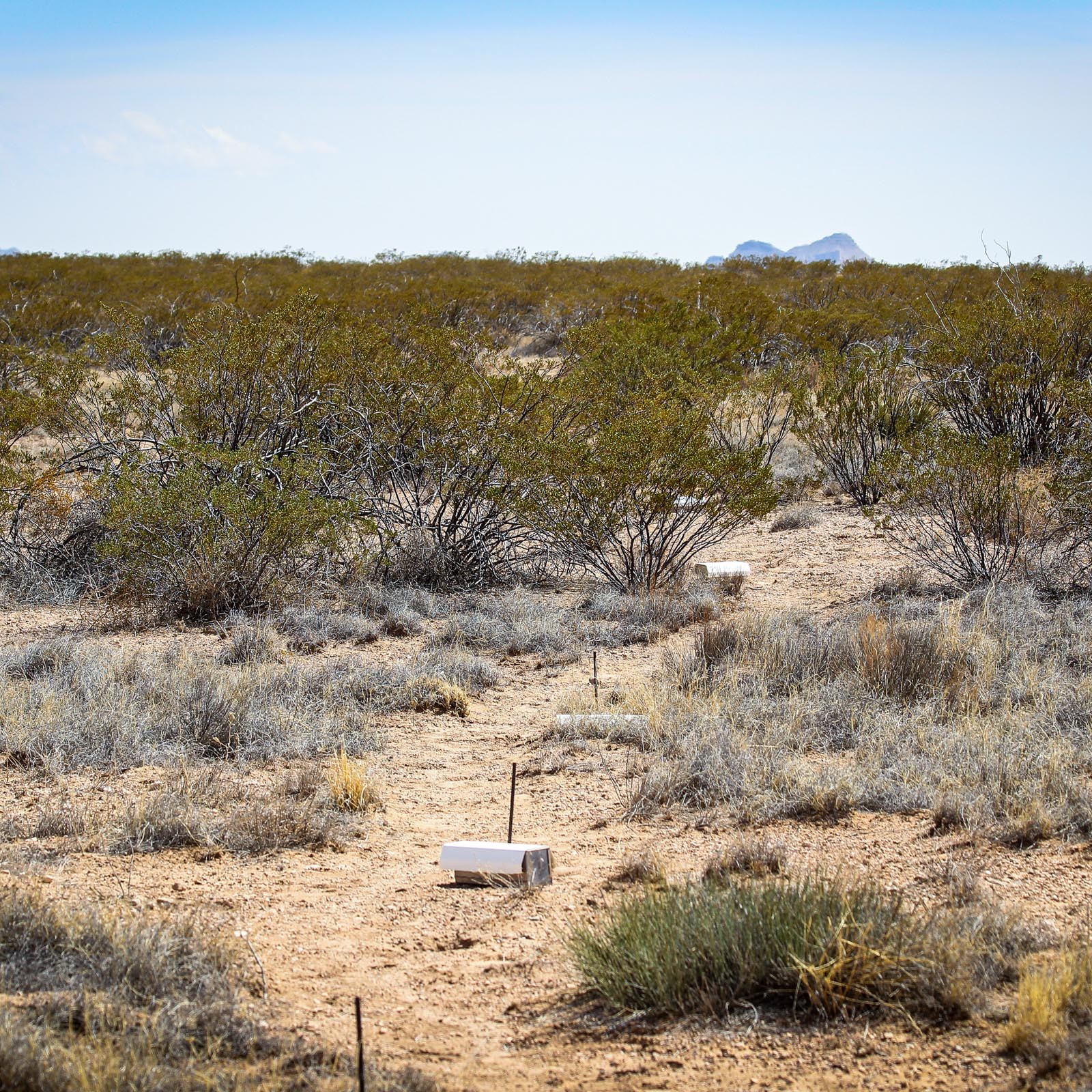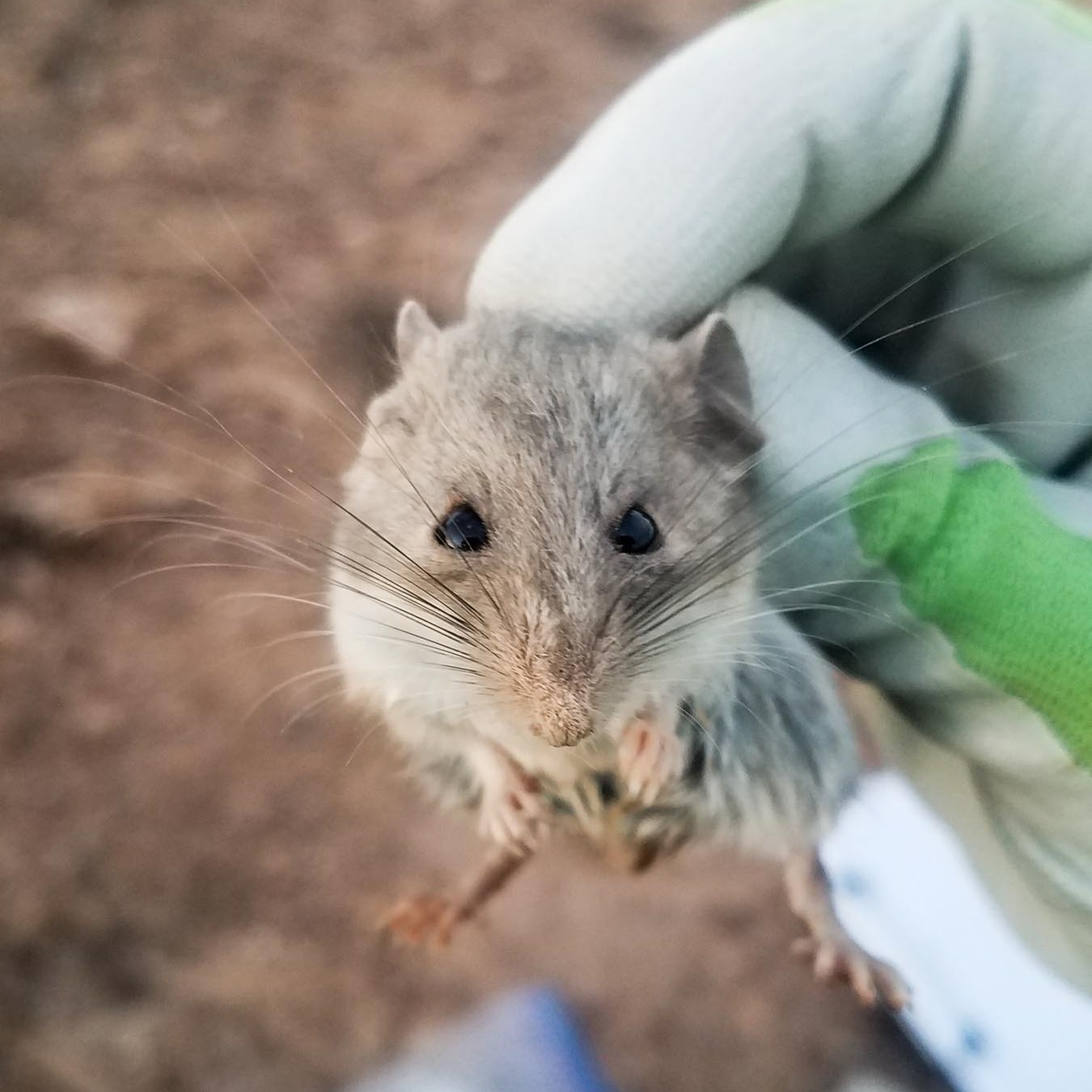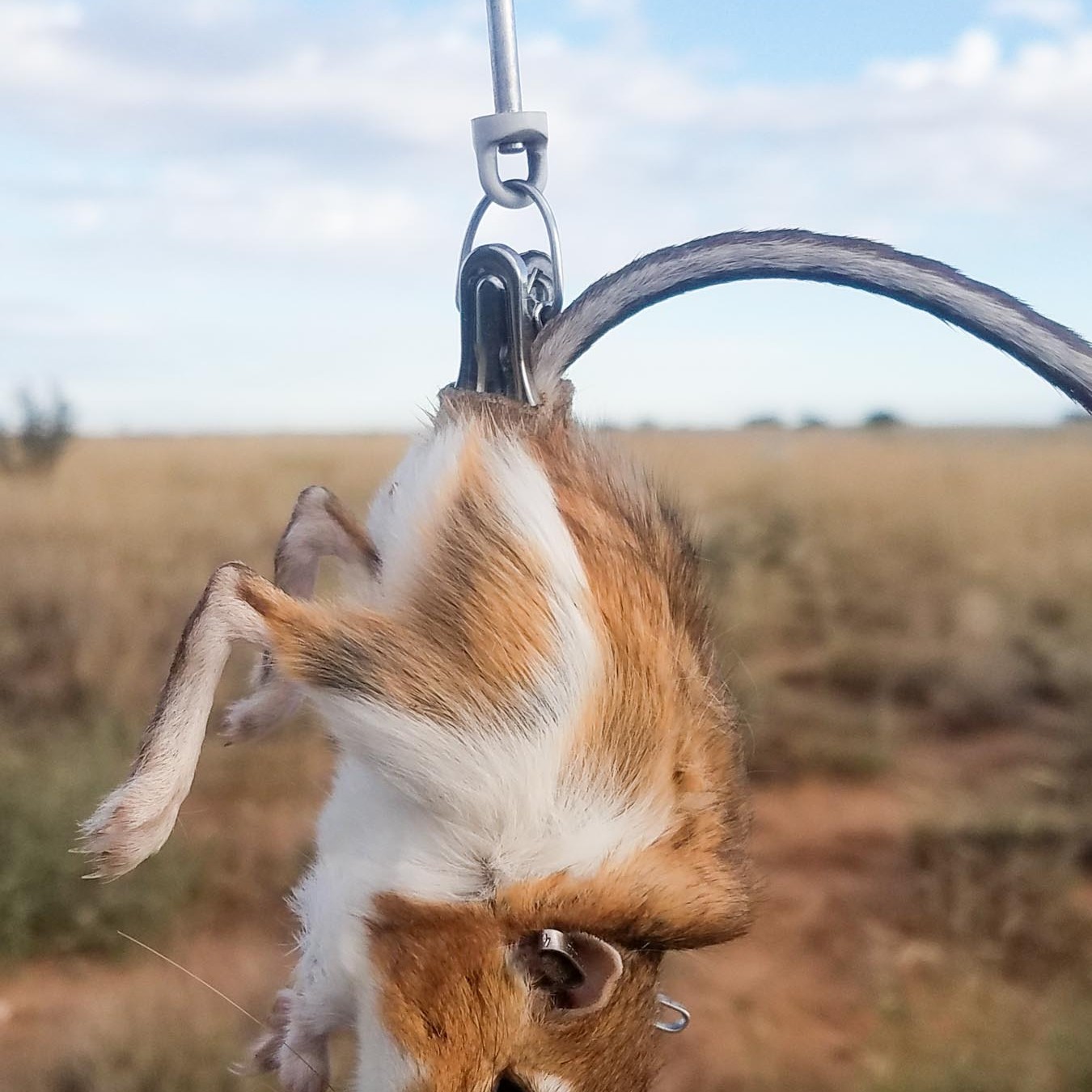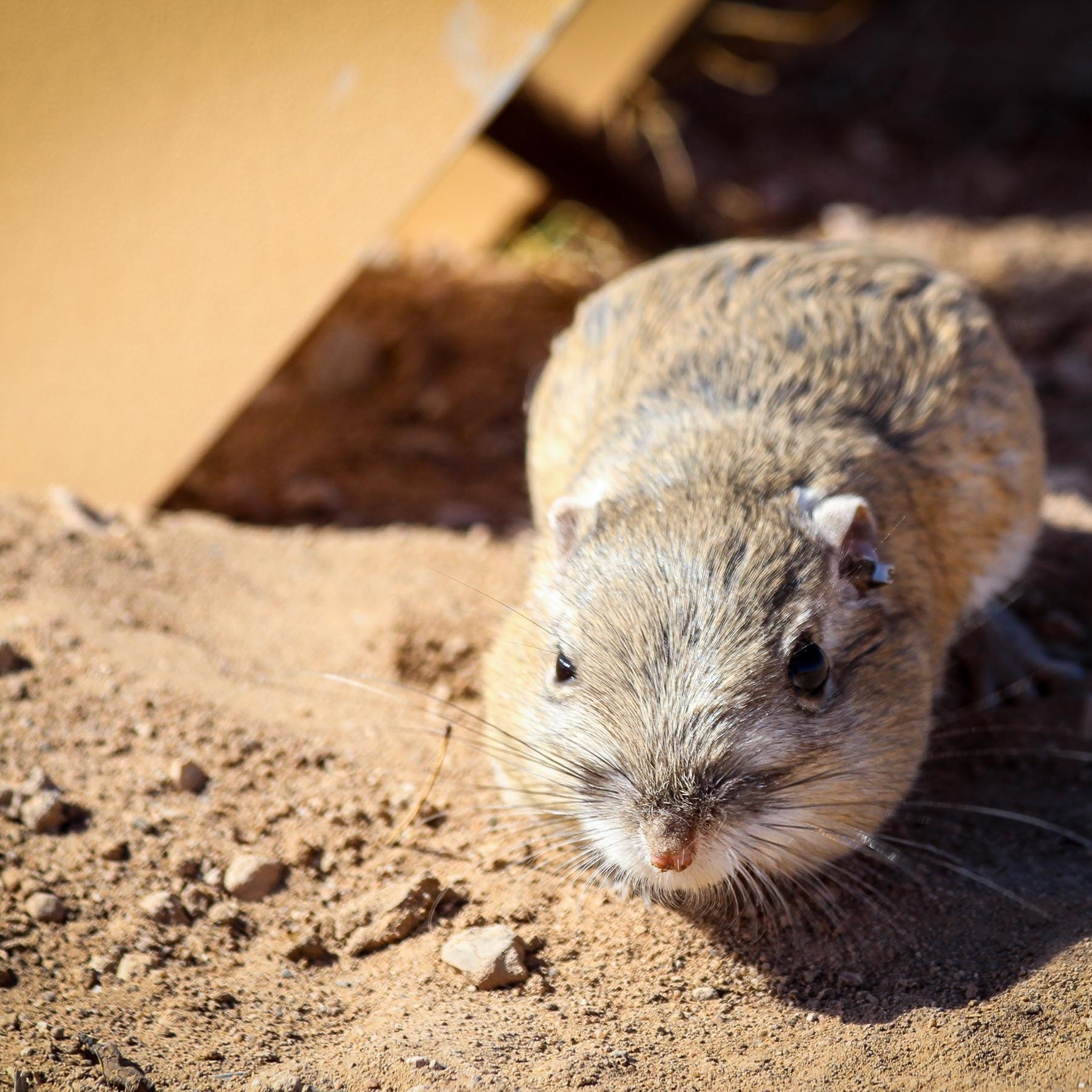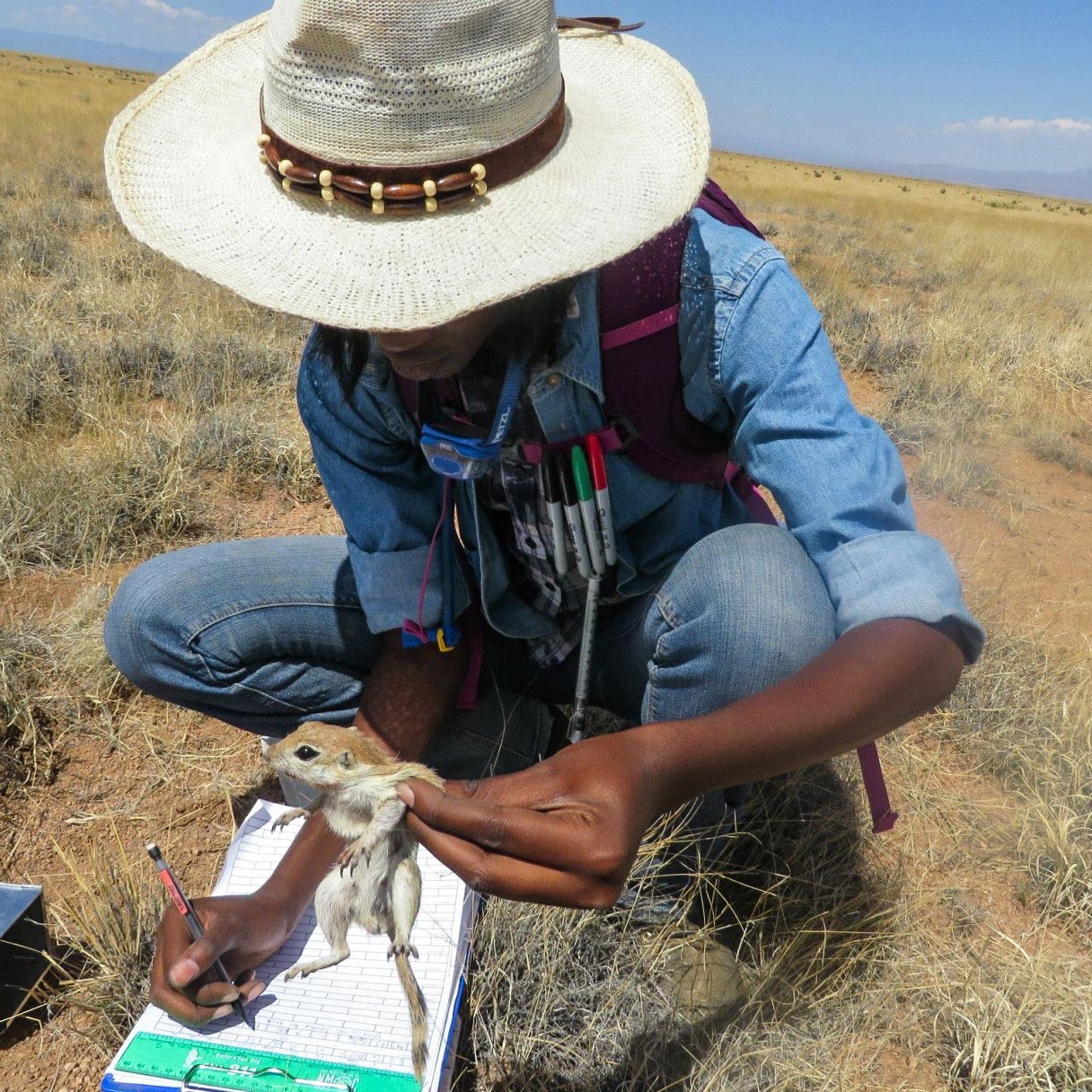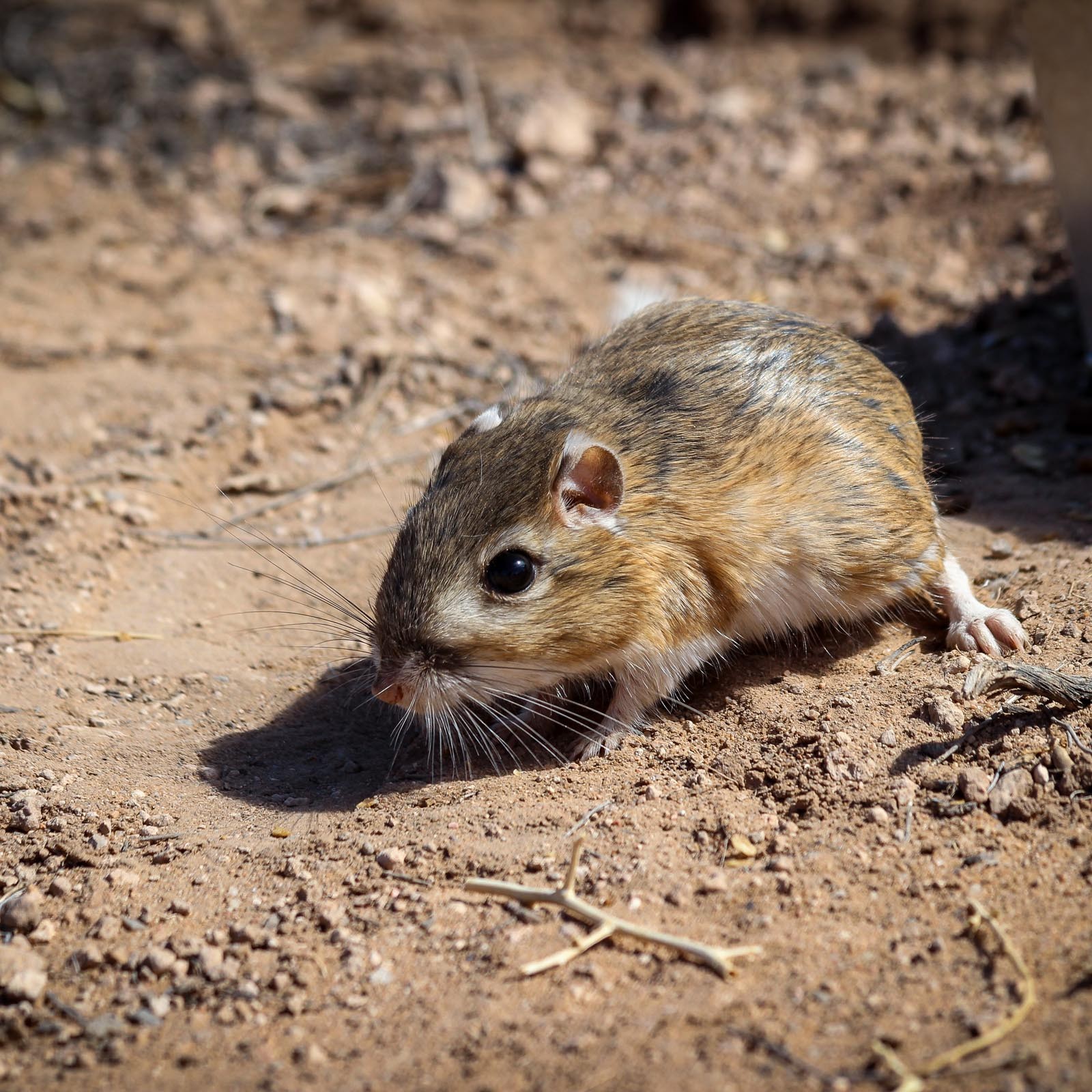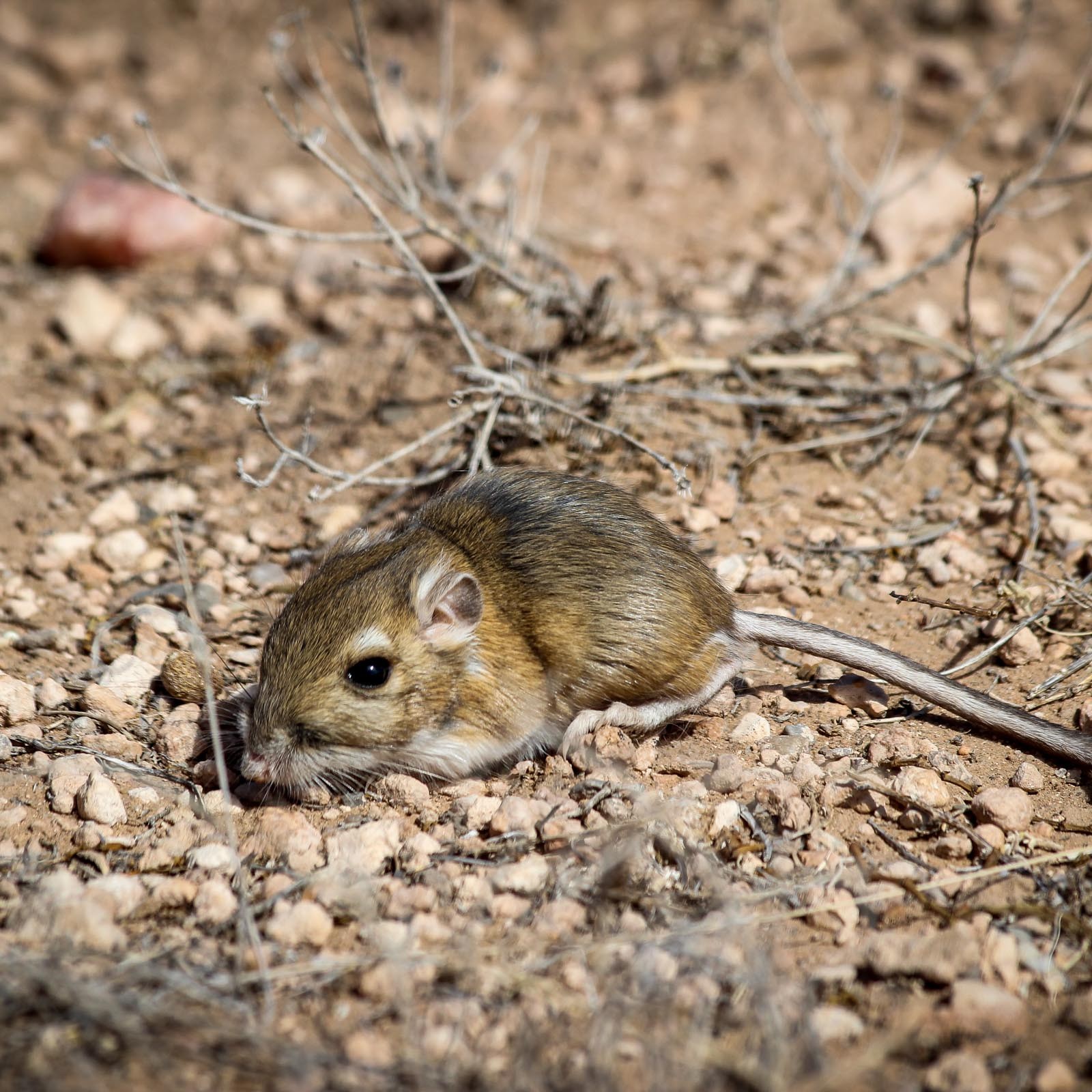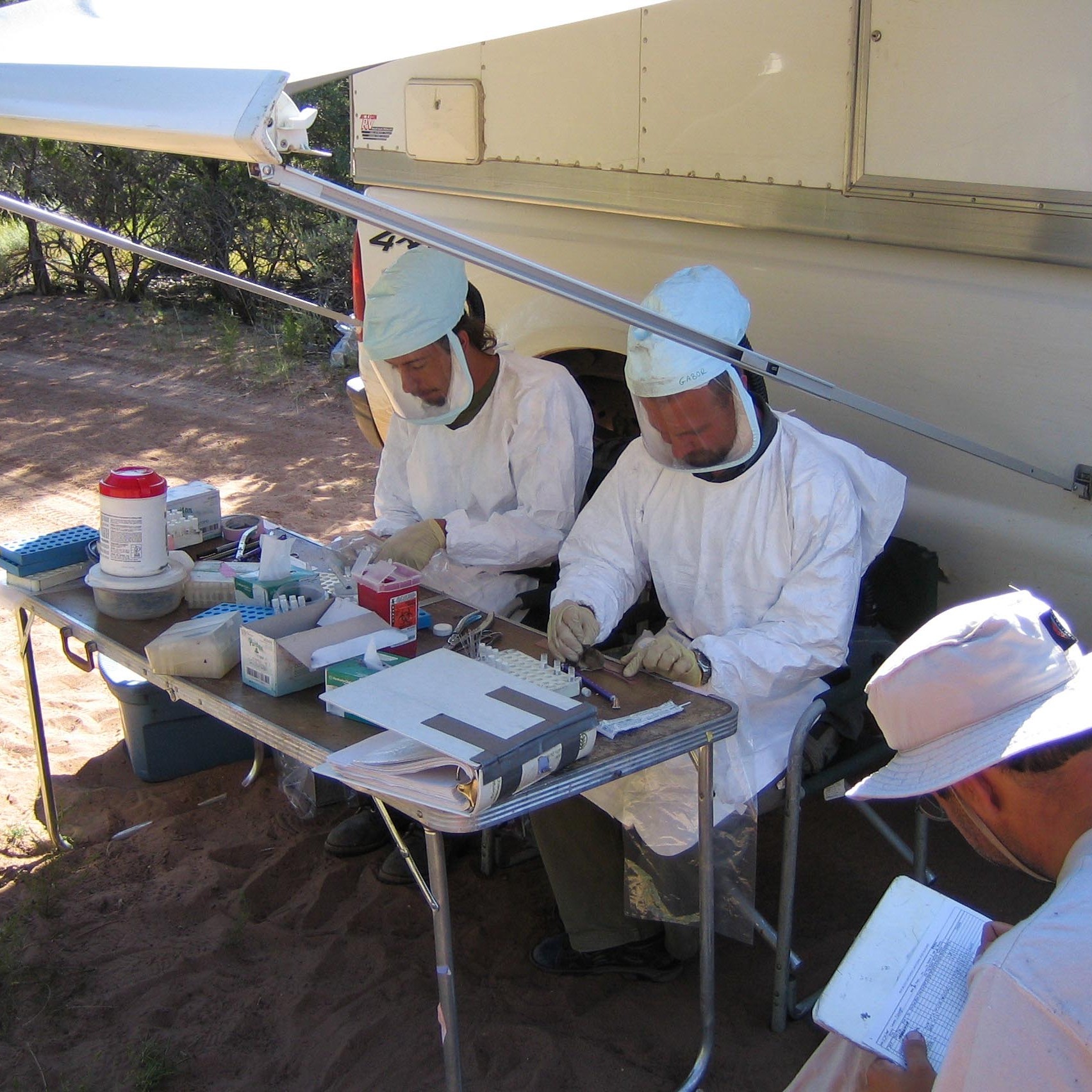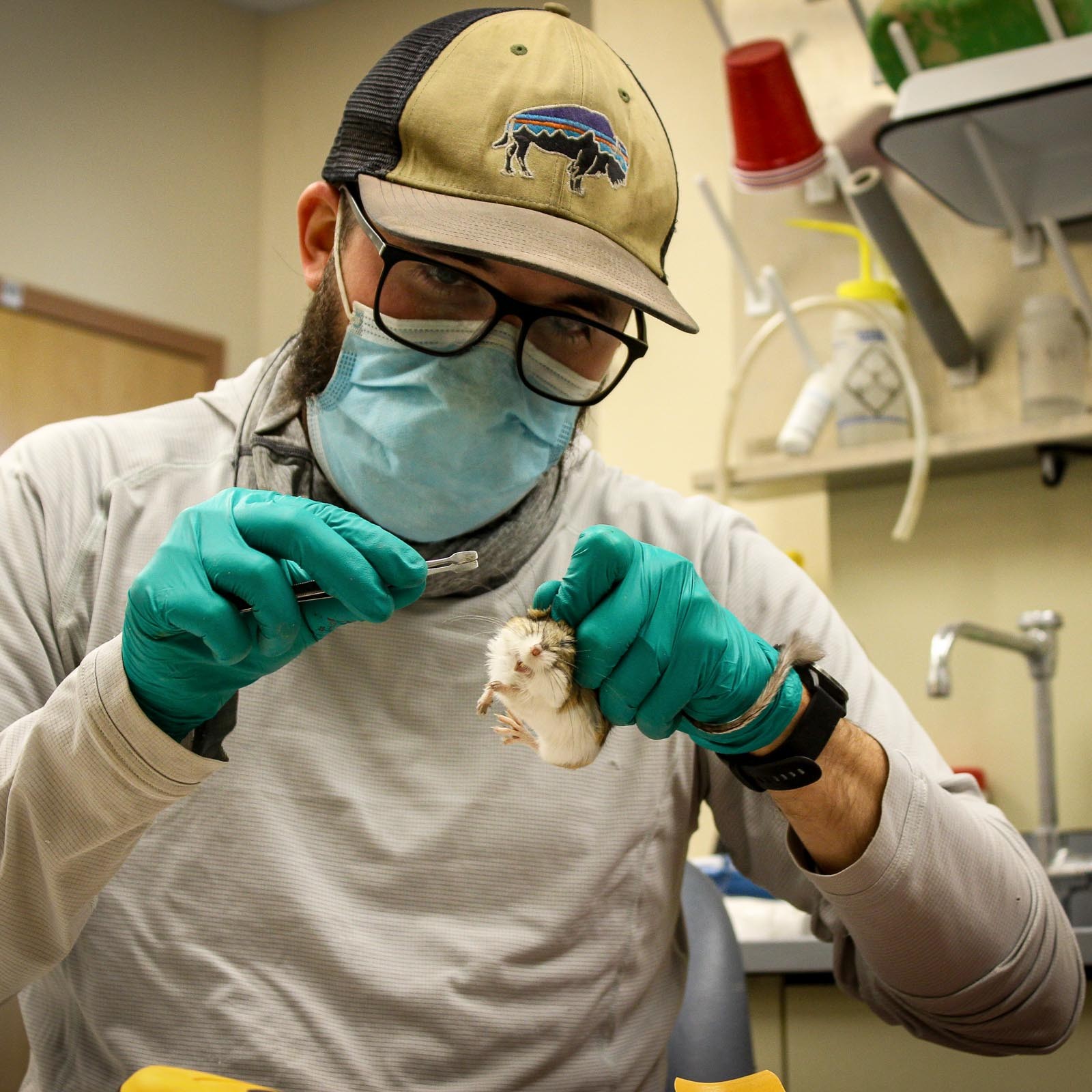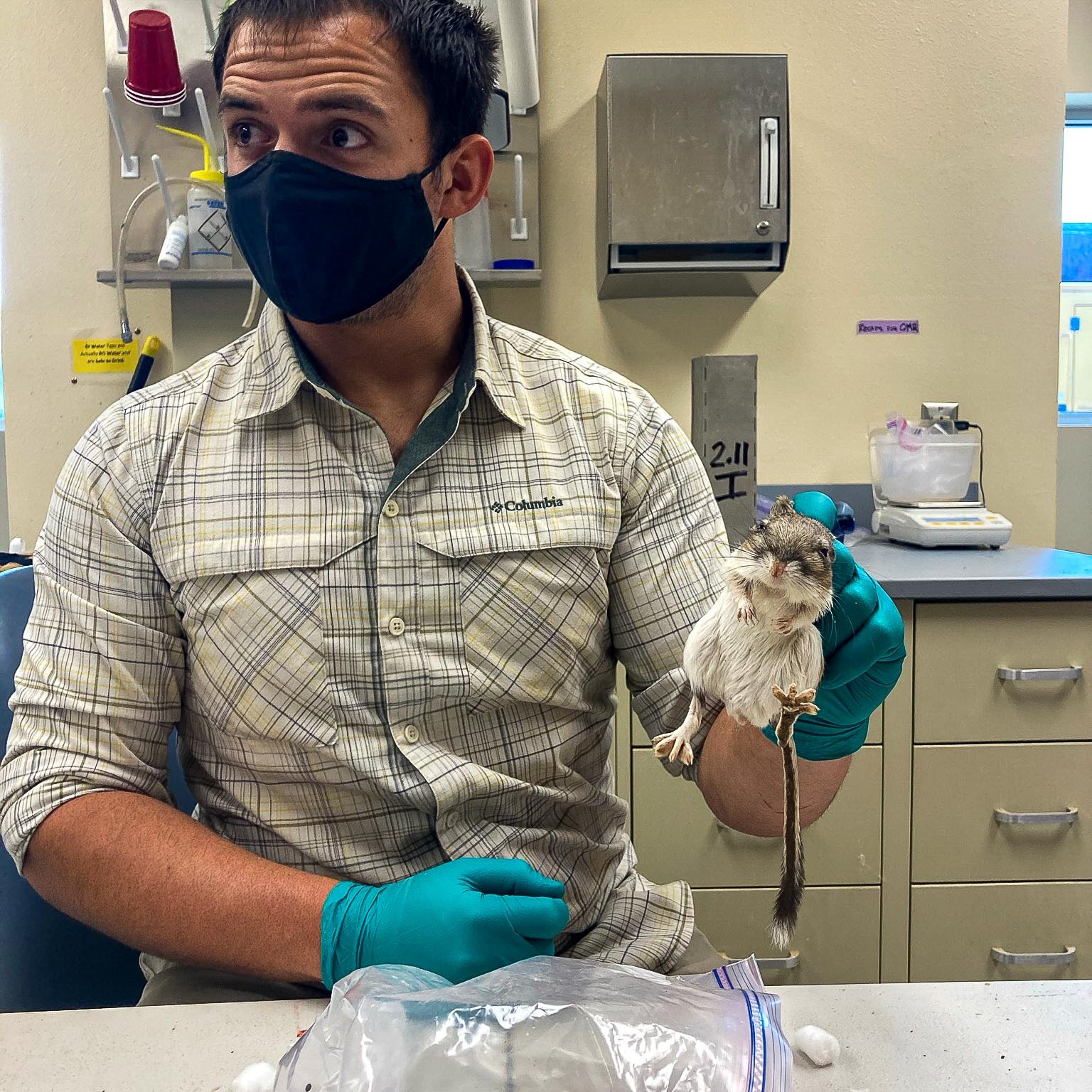Objective:
This project uses a novel and comprehensive mechanistic approach to link variation in seasonal resource abundance and quality to consumer population dynamics through changes in individual diet, body composition, and reproductive effort across a diverse community of small mammals that vary in size (5–150g), dietary guild (herbivore, granivore, insectivore), reproductive strategy (income versus capital breeders), and evolutionary lineage. Our objective is to examine the functional underpinnings of how resources drive population dynamics and structure consumer communities in stochastic, resource-limited environments.
Novelty:
Our novel approach combines traditional metrics of population abundance (counts, density) based on mark-recapture with three newer methodologies: (1) carbon and nitrogen isotope analysis of blood plasma to quantify monthly variation in the use of C3 versus C4 components of net primary productivity (NPP) and quantify trophic level; (2) fecal metabarcoding to identify dietary components at high taxonomic resolution; and (3) field-based quantitative magnetic resonance (QMR) to noninvasively measure body condition (lean and fat mass) of live-trapped individuals over their lifetimes. These data streams allow us to generate longitudinal records of these metrics at the individual animal level.
Design:
Our trapping design consists of 3-night bouts per month from March to October. Traps are set in two webs (145 Sherman traps/web) located at the ecotone between Chihuahuan Desert black grama grassland and Chihuahuan Desert creosotebush shrubland, located on either side of McKenzie South Road on the Sevilleta National Wildlife Refuge.
Responses:
Each month, we collect data on animal body mass, body condition with a portable QMR instrumentation, blood plasma and hair tissue for stable isotope analysis, and fecal samples for DNA metabarcoding. Since 2018, we have also monitored vegetation (see: Core Monitoring Plants: Plant Biomass Quadrats) in the mixed grassland-shrubland habitat, where we capture small mammals for analysis of relationships between mammal populations and plant communities.
Supporting Documents:
Noble, J.D., Collins, S.L., Hallmark, A.J., Maldonado, K., Wolf, B.O., Newsome, S.D. (2019) Foraging strategies of individual silky pocket mice over a boom-bust population cycle in a highly stochastic arid ecosystem. Oecologia. https://doi.org/10.1007/s00442-019-04432-x
Manlick, P.J., Maldonado, K., Newsome, S.D. (In Review) Competition drives individual diet specialization and reduced survival in desert rodents. Journal of Animal Ecology.


